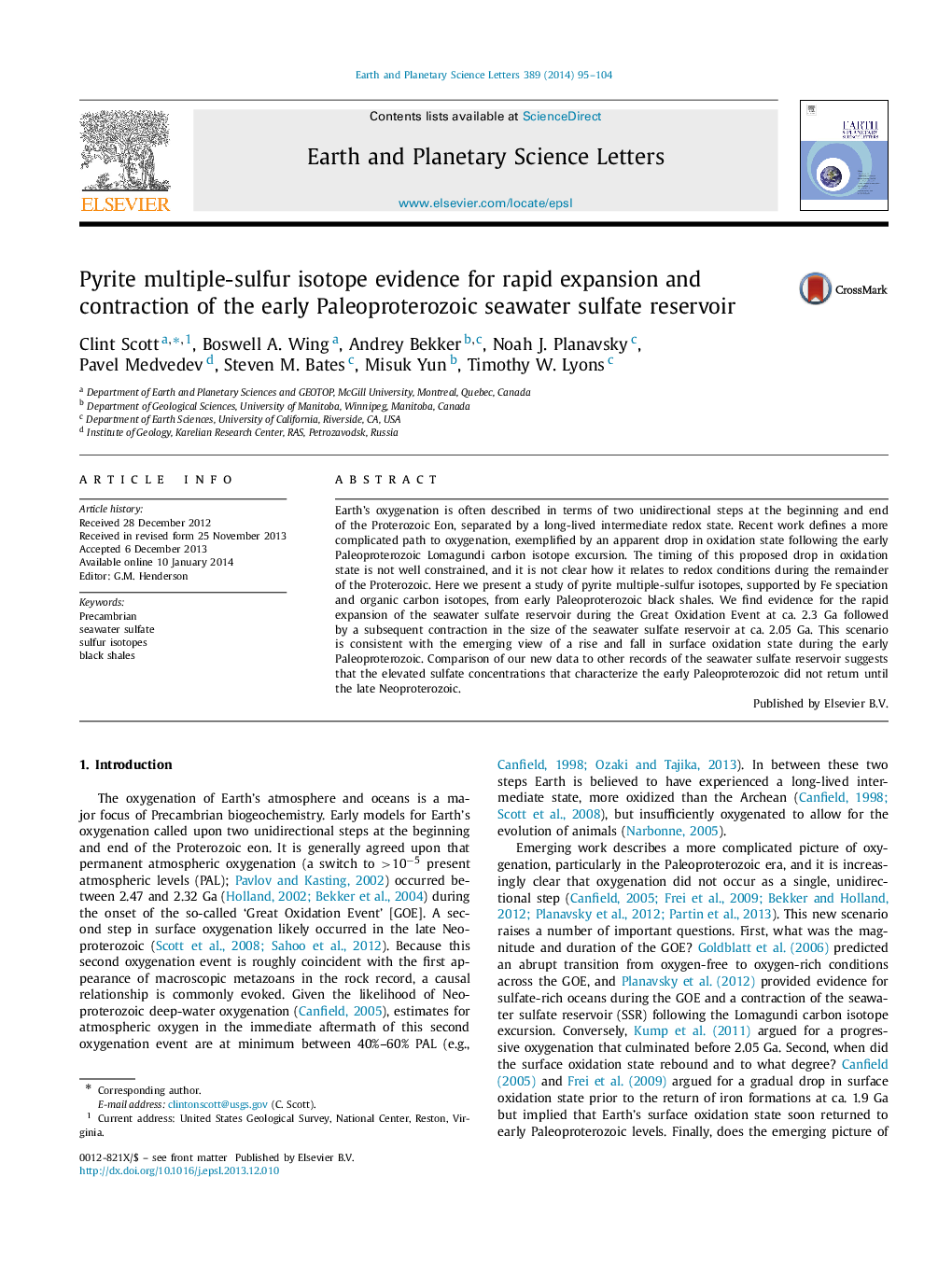| Article ID | Journal | Published Year | Pages | File Type |
|---|---|---|---|---|
| 6429692 | Earth and Planetary Science Letters | 2014 | 10 Pages |
â¢We present pyrite multiple-S and Corg isotopes from Paleoproterozoic black shales.â¢We track changes in the size of the seawater sulfate reservoir following the GOE.â¢Seawater sulfate concentrations grew rapidly as a response to the GOE.â¢Seawater sulfate concentrations contracted abruptly at 2.05 Ga.â¢Low sulfate conditions persisted for 100 s of millions of years.
Earthʼs oxygenation is often described in terms of two unidirectional steps at the beginning and end of the Proterozoic Eon, separated by a long-lived intermediate redox state. Recent work defines a more complicated path to oxygenation, exemplified by an apparent drop in oxidation state following the early Paleoproterozoic Lomagundi carbon isotope excursion. The timing of this proposed drop in oxidation state is not well constrained, and it is not clear how it relates to redox conditions during the remainder of the Proterozoic. Here we present a study of pyrite multiple-sulfur isotopes, supported by Fe speciation and organic carbon isotopes, from early Paleoproterozoic black shales. We find evidence for the rapid expansion of the seawater sulfate reservoir during the Great Oxidation Event at ca. 2.3 Ga followed by a subsequent contraction in the size of the seawater sulfate reservoir at ca. 2.05 Ga. This scenario is consistent with the emerging view of a rise and fall in surface oxidation state during the early Paleoproterozoic. Comparison of our new data to other records of the seawater sulfate reservoir suggests that the elevated sulfate concentrations that characterize the early Paleoproterozoic did not return until the late Neoproterozoic.
